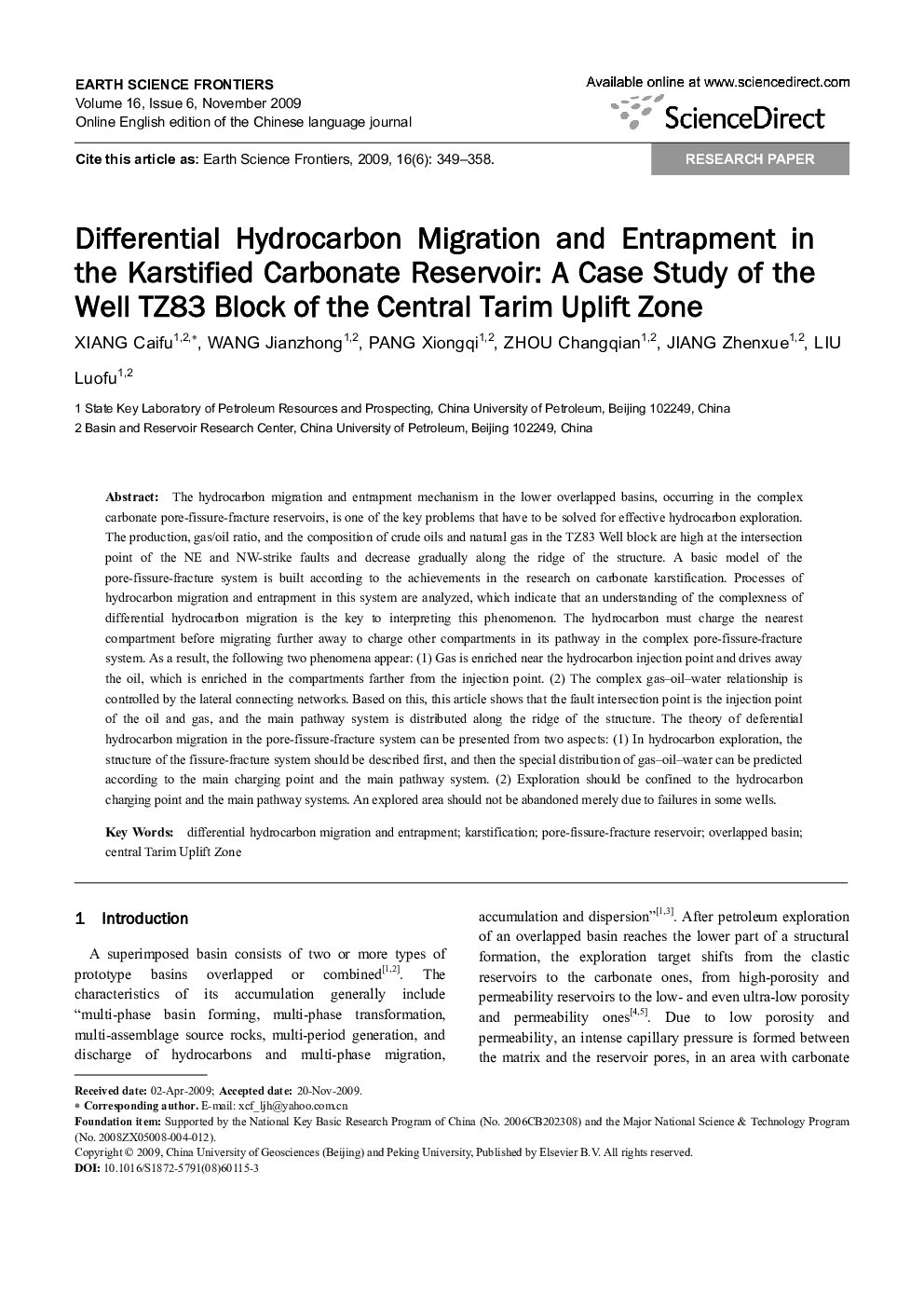| کد مقاله | کد نشریه | سال انتشار | مقاله انگلیسی | نسخه تمام متن |
|---|---|---|---|---|
| 4701492 | 1637908 | 2009 | 10 صفحه PDF | دانلود رایگان |

The hydrocarbon migration and entrapment mechanism in the lower overlapped basins, occurring in the complex carbonate pore-fissure-fracture reservoirs, is one of the key problems that have to be solved for effective hydrocarbon exploration. The production, gas/oil ratio, and the composition of crude oils and natural gas in the TZ83 Well block are high at the intersection point of the NE and NW-strike faults and decrease gradually along the ridge of the structure. A basic model of the pore-fissure-fracture system is built according to the achievements in the research on carbonate karstification. Processes of hydrocarbon migration and entrapment in this system are analyzed, which indicate that an understanding of the complexness of differential hydrocarbon migration is the key to interpreting this phenomenon. The hydrocarbon must charge the nearest compartment before migrating further away to charge other compartments in its pathway in the complex pore-fissure-fracture system. As a result, the following two phenomena appear: (1) Gas is enriched near the hydrocarbon injection point and drives away the oil, which is enriched in the compartments farther from the injection point. (2) The complex gas–oil–water relationship is controlled by the lateral connecting networks. Based on this, this article shows that the fault intersection point is the injection point of the oil and gas, and the main pathway system is distributed along the ridge of the structure. The theory of deferential hydrocarbon migration in the pore-fissure-fracture system can be presented from two aspects: (1) In hydrocarbon exploration, the structure of the fissure-fracture system should be described first, and then the special distribution of gas–oil–water can be predicted according to the main charging point and the main pathway system. (2) Exploration should be confined to the hydrocarbon charging point and the main pathway systems. An explored area should not be abandoned merely due to failures in some wells.
Journal: Earth Science Frontiers - Volume 16, Issue 6, November 2009, Pages 349-358